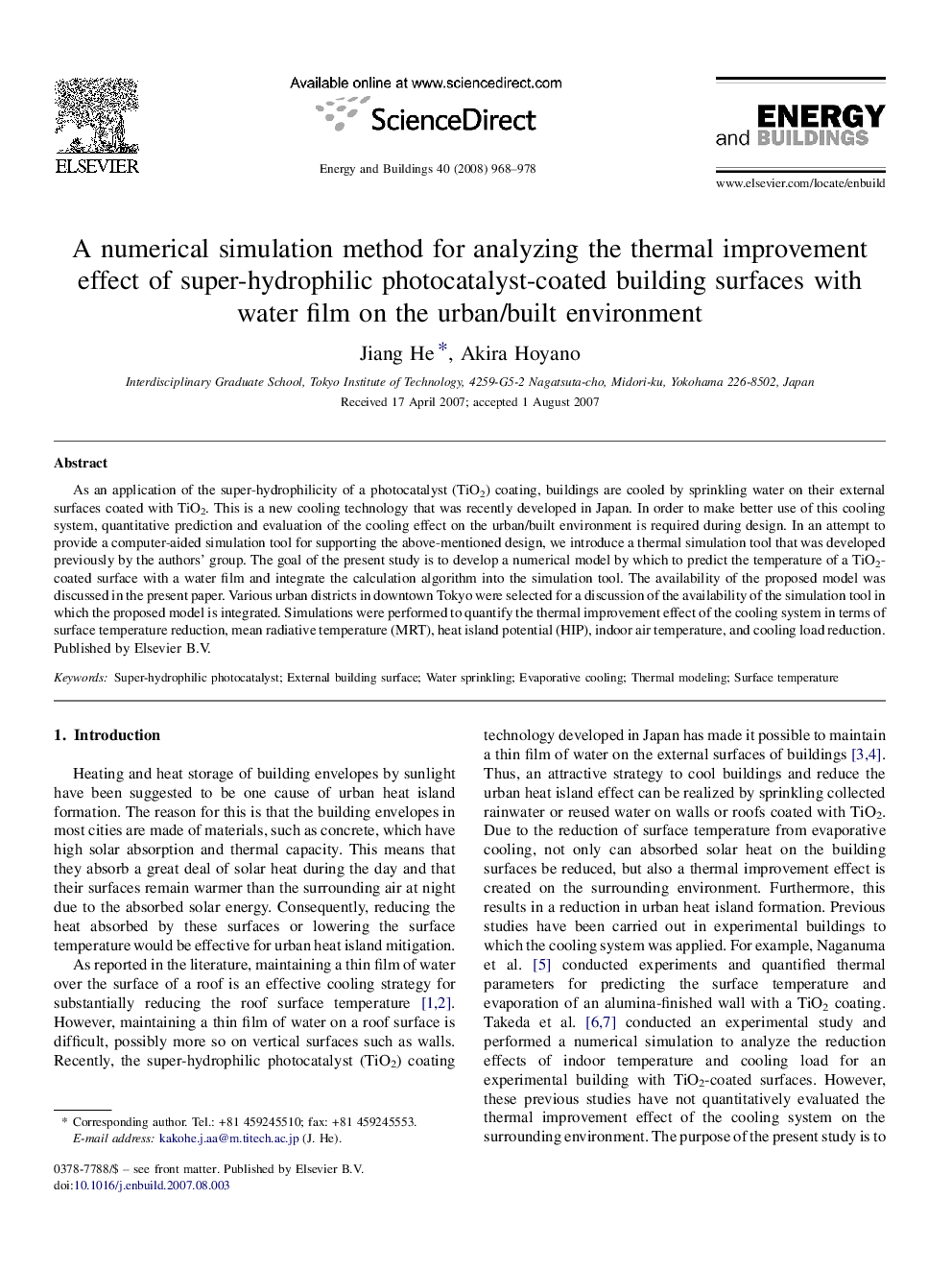| Article ID | Journal | Published Year | Pages | File Type |
|---|---|---|---|---|
| 265490 | Energy and Buildings | 2008 | 11 Pages |
As an application of the super-hydrophilicity of a photocatalyst (TiO2) coating, buildings are cooled by sprinkling water on their external surfaces coated with TiO2. This is a new cooling technology that was recently developed in Japan. In order to make better use of this cooling system, quantitative prediction and evaluation of the cooling effect on the urban/built environment is required during design. In an attempt to provide a computer-aided simulation tool for supporting the above-mentioned design, we introduce a thermal simulation tool that was developed previously by the authors’ group. The goal of the present study is to develop a numerical model by which to predict the temperature of a TiO2-coated surface with a water film and integrate the calculation algorithm into the simulation tool. The availability of the proposed model was discussed in the present paper. Various urban districts in downtown Tokyo were selected for a discussion of the availability of the simulation tool in which the proposed model is integrated. Simulations were performed to quantify the thermal improvement effect of the cooling system in terms of surface temperature reduction, mean radiative temperature (MRT), heat island potential (HIP), indoor air temperature, and cooling load reduction.
